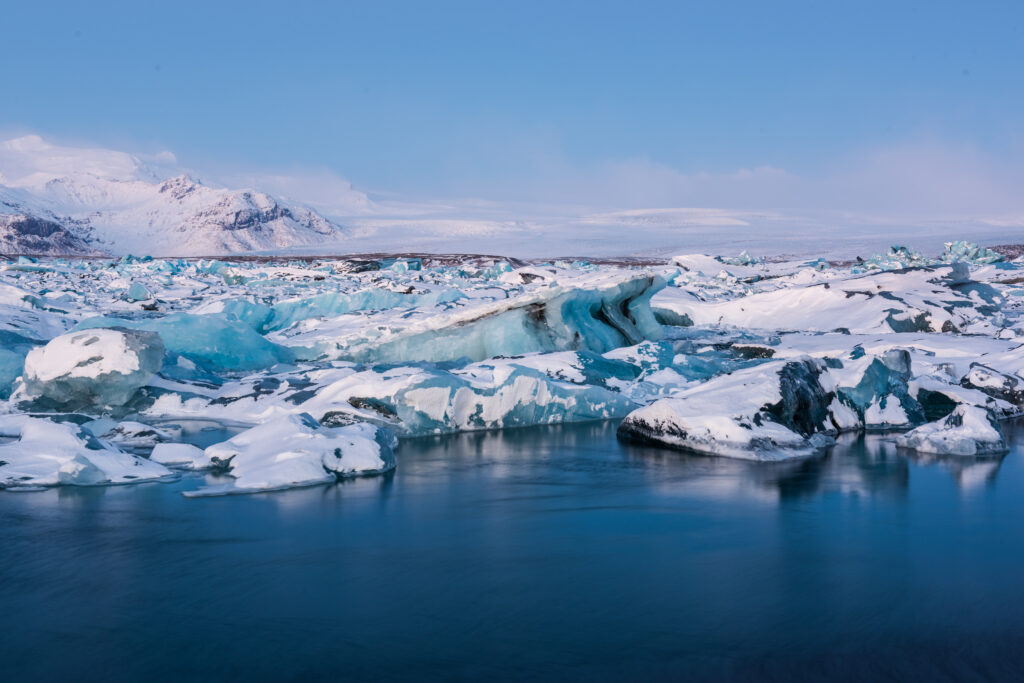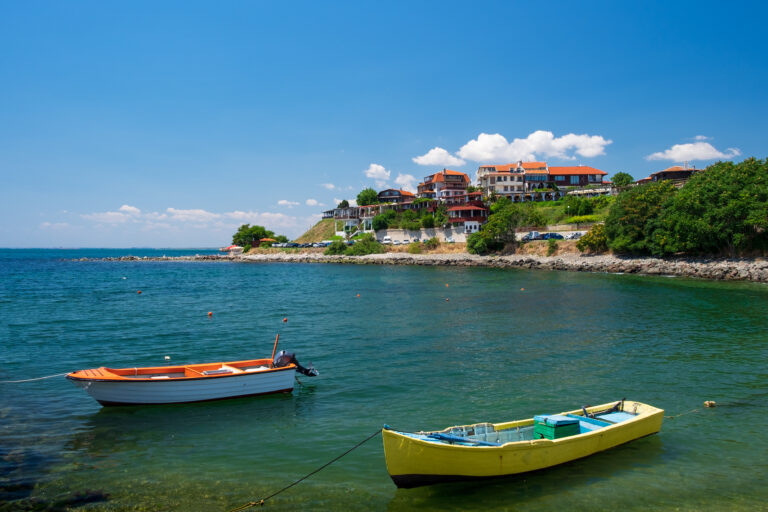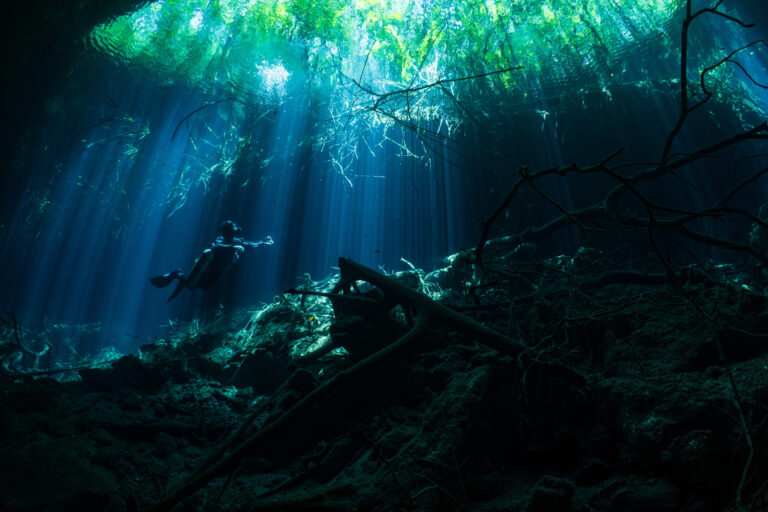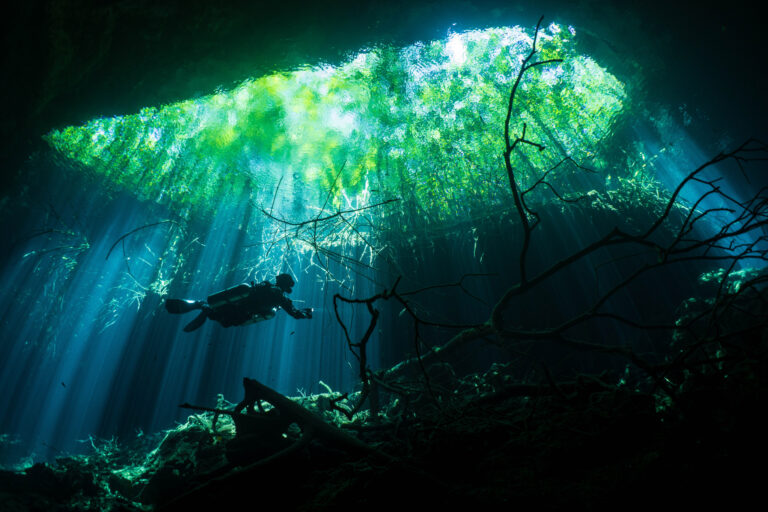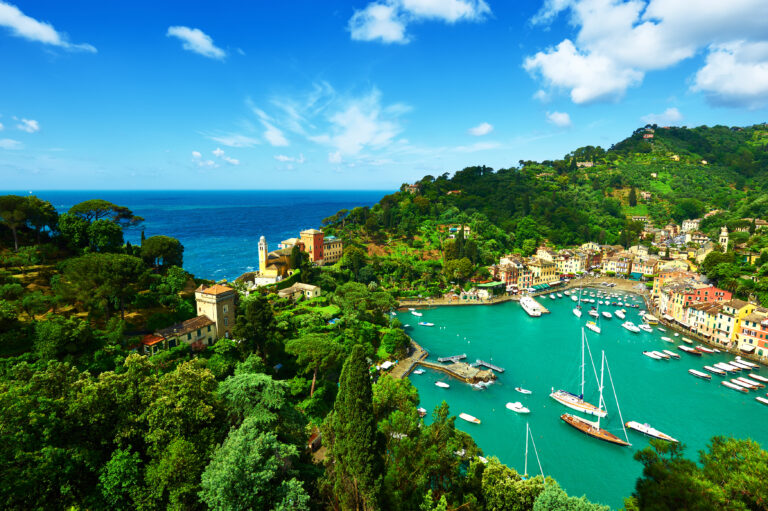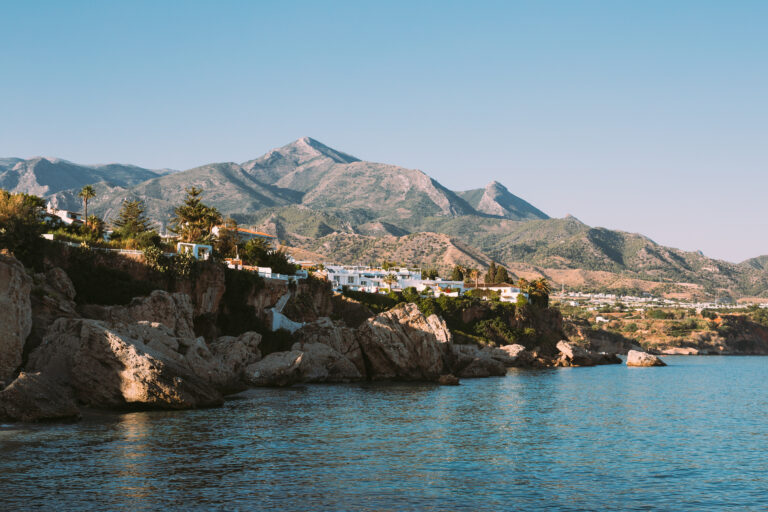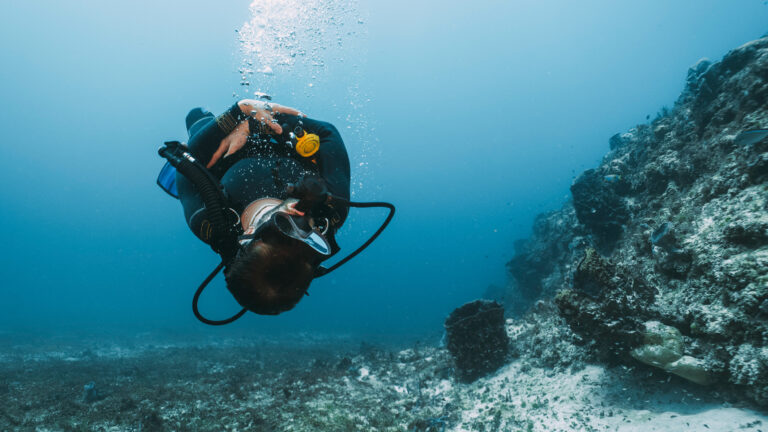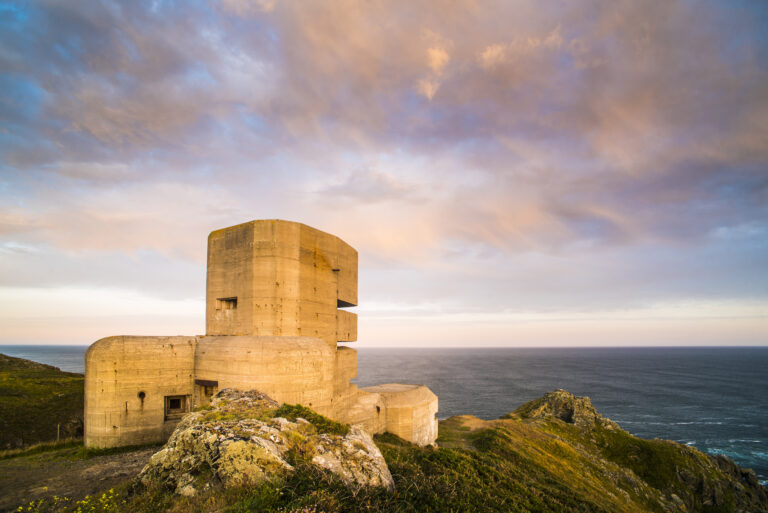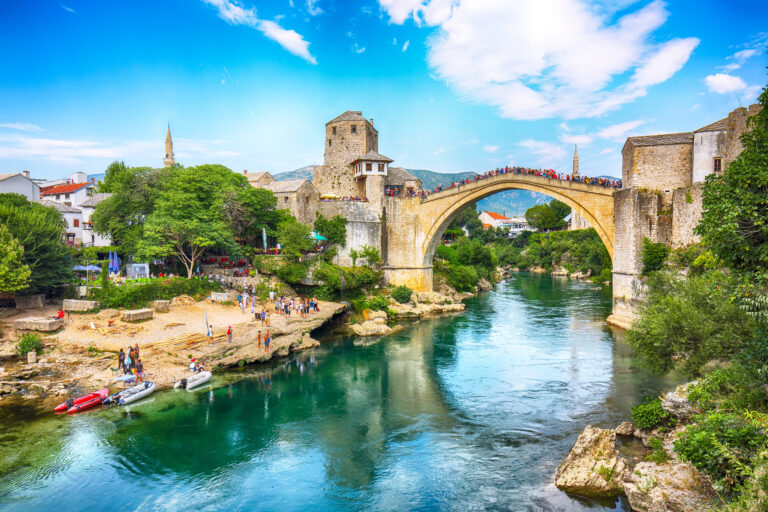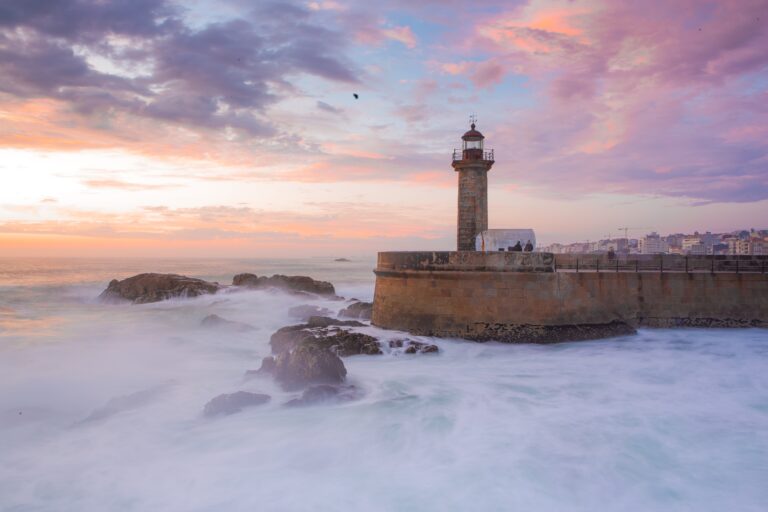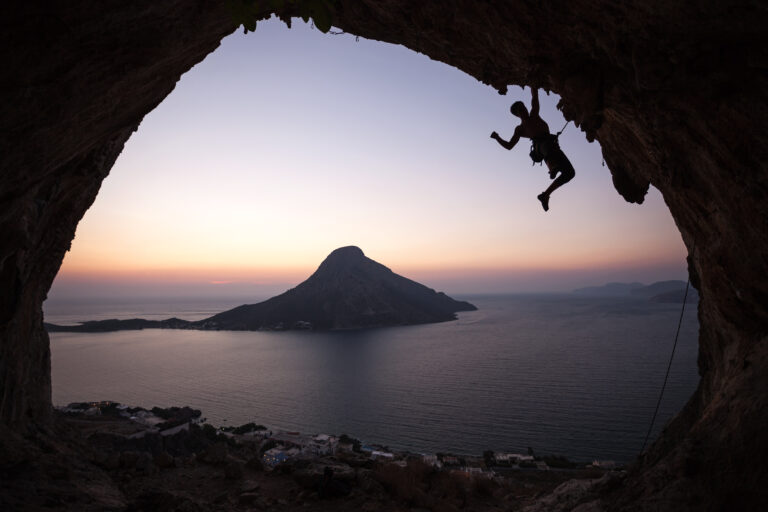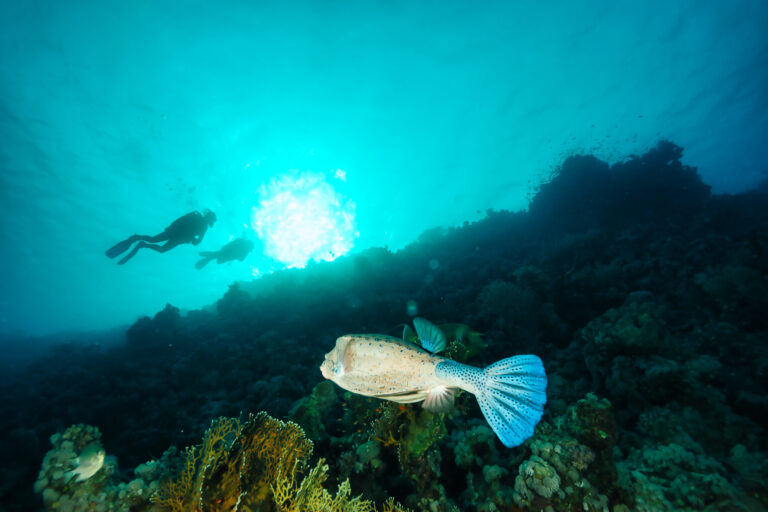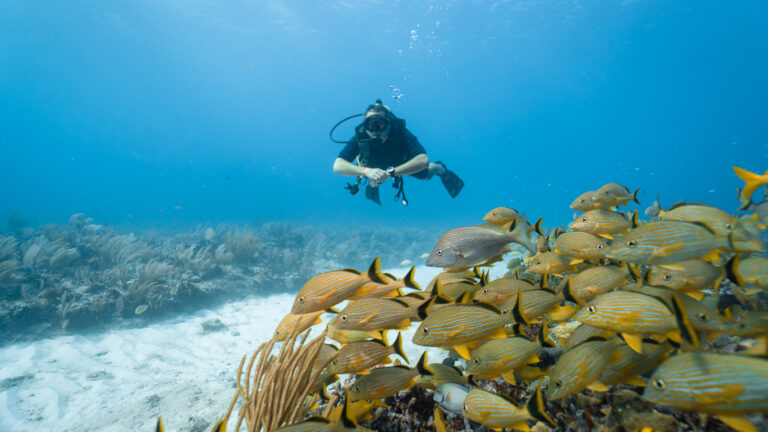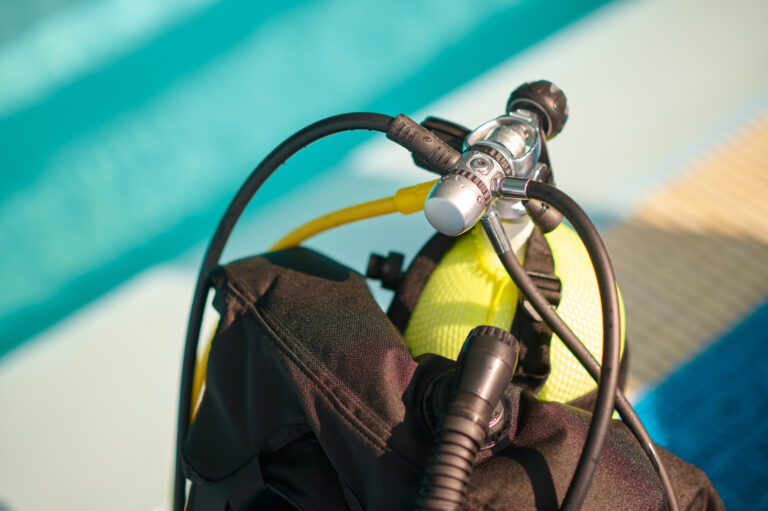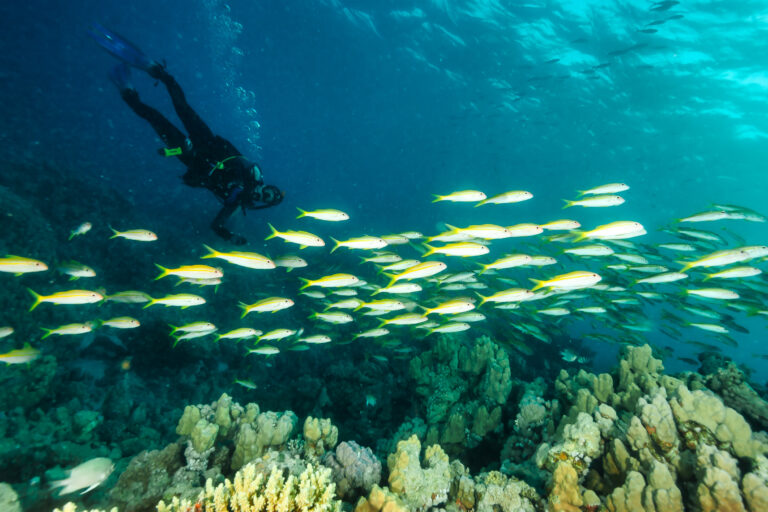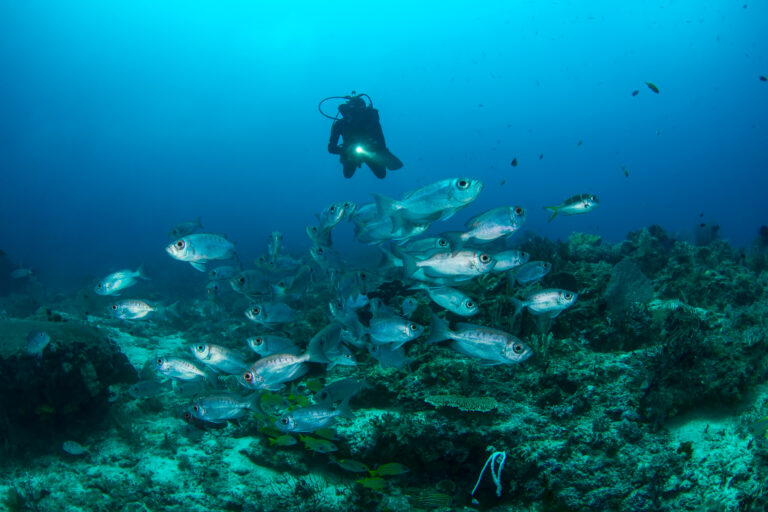SCUBA DIVERS’ TRAVEL GUIDE TO Iceland
Iceland is a land of fire and ice, where volcanoes and glaciers coexist in stunning contrast. This Nordic island nation offers a unique scuba diving experience for adventurous travelers who want to explore the underwater wonders of the Arctic. Iceland’s clear and cold waters are home to diverse marine life, such as seals, whales, sharks, and colorful fish. You can also dive between two continents in the Silfra fissure, where the North American and Eurasian tectonic plates meet. Iceland’s scuba diving sites are accessible all year round, but the best time to visit is from May to September, when the days are long and the weather is mild. Whether you are looking for a relaxing dive in a geothermal lagoon or a thrilling dive in a glacial lake, Iceland has something for every scuba diver.
LOCATION AND GEOGRAPHY
Iceland, a Nordic island nation, is a scuba diver’s paradise, renowned for its dramatic landscapes that extend beneath the surface of its frigid waters. Situated at the confluence of the North Atlantic and Arctic Oceans, just below the Arctic Circle, the country is perched atop the Mid-Atlantic Ridge, where the North American and Eurasian tectonic plates meet. This unique geological setting, particularly at the famous Silfra fissure in Þingvellir National Park, offers divers the unparalleled experience of gliding between continents in crystal-clear glacial meltwater. The island’s rugged coastline, dotted with fjords, bays, and inlets, provides a plethora of dive sites, each with its own distinctive underwater topography and marine life. From the haunting remains of shipwrecks off the Reykjanes Peninsula to the vibrant sea life and kelp forests of the Westfjords, Iceland’s diverse underwater landscapes are as varied and spectacular as the country’s famous volcanic terrain above the waves.
VISA AND ENTRY REQUIREMENTS
Before embarking on your underwater adventure to explore Iceland’s unique dive sites, such as the renowned Silfra fissure, it is essential to ensure you have the correct visa and entry requirements in place. Iceland is a member of the Schengen Agreement, which allows for passport-free travel between 26 European countries for short stays of up to 90 days within a 180-day period for tourists from many countries. Travelers from the US, Canada, Australia, and numerous other nations do not require a visa for these short visits. However, if you are not from a visa-exempt country or plan to stay longer, you will need to apply for a Schengen visa. Always check the latest information from the Icelandic Directorate of Immigration or the nearest Icelandic consulate as regulations can change. Additionally, ensure your passport is valid for at least three months beyond your planned departure date from the Schengen area. Keep in mind that from 2022, the European Travel Information and Authorization System (ETIAS) will come into effect, and visitors eligible for visa-free entry will need to obtain this travel authorization prior to their trip.
GETTING TO Iceland
Getting to Iceland for an unforgettable scuba diving adventure is a journey that will take you to the edge of the Arctic Circle. The country is well-connected by air with Keflavík International Airport, located about 50 kilometers southwest of the capital, Reykjavik, serving as the primary gateway for international travelers. Major airlines offer direct flights from various cities across Europe and North America, making access relatively easy for divers from around the world. Once you land, you can rent a car or take a shuttle bus to reach the capital, where dive tours are frequently organized. For those looking to dive in the famous Silfra fissure, it’s just a short trip from Reykjavik to the Þingvellir National Park. Although remote, Iceland’s unique underwater landscapes, including volcanic rock formations and crystal-clear glacial waters, make any travel efforts well worth the experience.
BEST TIME TO DIVE
The best time to scuba dive in Iceland is during the summer months, from June to August, when the daylight stretches almost around the clock, and water temperatures are at their most tolerable, ranging from 2°C to 7°C (35°F to 45°F). During this period, the visibility in the crystal-clear glacial waters can exceed 100 meters, offering an unparalleled underwater experience, especially in iconic dive sites like Silfra, a fissure between the North American and Eurasian tectonic plates. Although diving in Iceland is possible year-round, the summer offers more stable weather conditions and slightly warmer waters, which is crucial for comfort and safety given the cold temperatures. Divers should be prepared with appropriate drysuit certifications and experience, as drysuit diving is a necessity in these frigid waters. For those willing to brave the cold, winter dives can be magical, with the potential for fewer tourists and the mesmerizing dance of the Northern Lights above as you surface from the depths of Iceland’s unique underwater landscapes.
ACCOMMODATION OPTIONS
Accommodation options for scuba divers in Iceland range from cozy guesthouses to luxurious hotels, catering to the needs of both budget-conscious explorers and those seeking comfort after a day submerged in the country’s chilly waters. In the vicinity of popular dive sites like Silfra, located within Þingvellir National Park, divers can opt for rustic lodges or modern apartments that offer the convenience of proximity to the dive site and often include facilities to dry and store gear. For a more immersive Icelandic experience, traditional cottages and farmstays provide a unique opportunity to enjoy local hospitality and cuisine. In the capital city of Reykjavik, which serves as a hub for many diving excursions, a wide array of accommodation options are available, including boutique hotels and hostels, ensuring that divers can find the perfect place to rest and recharge. Regardless of where you choose to stay, the enchanting landscapes and the allure of Iceland’s underwater marvels are never far away.
DIVE OPERATORS AND DIVE SHOPS
In the land of fire and ice, scuba diving offers a unique and otherworldly experience, with dive operators and shops in Iceland providing expert guidance through this rugged underwater frontier. The most reputable dive shops are concentrated around the famed Silfra fissure, where the North American and Eurasian tectonic plates meet, offering crystal-clear glacial waters and stunning visibility. These operators prioritize safety and environmental stewardship, often requiring proof of dry suit certification due to the near-freezing temperatures. They provide not only the necessary equipment but also local knowledge that enhances the dive experience, whether you’re exploring the dramatic lava rock formations or the vibrant marine life. Icelandic dive shops typically offer small group tours to ensure personalized attention and a more intimate encounter with this subaquatic realm. With their expertise, divers can immerse themselves in the pristine and surreal underwater landscapes of Iceland, making for an unforgettable adventure in one of the world’s most unique diving destinations.
TRANSPORTATION WITHIN Iceland
In Iceland, transportation options to reach your scuba diving adventure are as varied as the underwater landscapes you’re eager to explore. While the country does not have a railway system, its well-maintained roads make self-driving a popular choice, offering the freedom to navigate the stunning scenery at your own pace and the convenience of hauling your gear. Car rentals are readily available at Keflavík International Airport and in Reykjavik, with 4×4 vehicles recommended for rougher terrain and winter conditions. For those preferring not to drive, scheduled buses connect major towns and tourist destinations, including dive sites like the famous Silfra fissure in Þingvellir National Park. In more remote areas, such as the Westfjords, internal flights can save time and offer a bird’s-eye view of the dramatic landscapes. For the ultimate in convenience, consider booking with local dive operators who often provide transportation as part of their dive packages, ensuring you reach your underwater destination with ease.
CURRENCY AND PAYMENT METHODS
When traveling to Iceland for a scuba diving adventure, it’s important to note that the official currency is the Icelandic króna (ISK). Credit and debit cards are widely accepted throughout the country, even in small towns and at dive shops, making them the most convenient and often preferred method of payment. Visa and Mastercard are the most commonly accepted cards, with American Express and Discover being less prevalent. ATMs are readily available, especially in larger towns and cities, should you need to withdraw cash. However, it’s advisable to carry a small amount of cash for incidental expenses, as some remote areas or small local vendors may not accept cards. Keep in mind that while tipping is not customary in Iceland, it is always appreciated for exceptional service. It’s also worth checking with your bank about foreign transaction fees and notifying them of your travel plans to avoid any issues while making transactions abroad.
LANGUAGE AND COMMUNICATION
When embarking on a scuba diving adventure in Iceland, it’s important to note that the official language is Icelandic, a North Germanic language with roots in Old Norse. However, divers will find that English is widely spoken within the diving community, as well as by most Icelanders, especially in tourist areas and the capital, Reykjavik. Dive operators typically offer services in English, and often in other European languages too. Communication underwater follows the universal hand signals used by divers around the world, ensuring that regardless of linguistic differences, all divers can share important information and alerts. It’s still a good idea to familiarize yourself with basic Icelandic phrases and diving terms, as a courtesy and to enhance your cultural experience. Additionally, understanding local names for fish and geological features can enrich your interactions with guides and your overall diving experience in Iceland’s unique underwater landscapes.
LOCAL CULTURE AND ATTRACTIONS
Iceland, a land of stark contrasts and raw natural beauty, offers scuba divers not only unique underwater experiences but also a rich tapestry of culture and attractions on land. After marveling at the wonders of the Silfra fissure, where the North American and Eurasian tectonic plates meet, divers can immerse themselves in the local culture by visiting the capital city of Reykjavik, with its vibrant arts scene, iconic Hallgrímskirkja church, and the National Museum of Iceland, which showcases the country’s fascinating Viking heritage. The island’s folklore is alive with tales of elves and trolls, adding a mystical dimension to the dramatic landscapes. Geothermal hot springs, such as the famous Blue Lagoon, provide a soothing contrast to the cold waters of the dive sites, while the Golden Circle route offers a journey through geysers, waterfalls, and the historical Thingvellir National Park. From sampling traditional Icelandic cuisine, like hákarl (fermented shark) and brennivín (a local schnapps), to witnessing the spectacular Northern Lights, Iceland’s blend of natural and cultural attractions makes it an unforgettable destination for divers and non-divers alike.
CULTURAL ETIQUETTE AND TIPS
When scuba diving in Iceland, it’s essential to approach the experience with respect for the local culture and environment. Icelanders are proud of their pristine natural landscapes and expect visitors to adhere to strict environmental guidelines to preserve them. Always follow the Leave No Trace principles, especially at delicate dive sites like Silfra, where the tectonic plates meet. It’s customary to greet locals with a friendly “halló” and a handshake, and showing appreciation for their unique traditions and willingness to share their diving spots will go a long way. Be punctual for your dive appointments, as timeliness is valued in Icelandic culture. Dressing in layers is advisable due to the unpredictable weather, and while tipping isn’t mandatory, it’s appreciated for exceptional service. Lastly, immerse yourself in the local customs by enjoying a post-dive soak in one of the country’s many geothermal pools, a perfect way to warm up and engage with Icelanders in a relaxed setting.
LOCAL LAWS AND REGULATIONS RELEVANT TO TOURISTS
When planning a scuba diving trip to Iceland, it is crucial to familiarize yourself with local laws and regulations to ensure a safe and lawful experience. Diving in Iceland is subject to strict rules to protect both the divers and the delicate aquatic ecosystems. All divers must be certified and are required to dive with a registered dive operator or guide, as independent diving is not permitted. It is mandatory to use a dry suit due to the cold water temperatures, and proof of dry suit certification or logged dry suit dives is often requested. Diving in protected areas, such as Silfra in Þingvellir National Park, requires a paid permit, and divers must adhere to guidelines that prevent the disturbance of natural features. Additionally, collecting artifacts or interacting with marine life is strictly prohibited. Always check for the most current regulations with your chosen dive operator, as Icelandic laws and guidelines can change to adapt to environmental concerns and safety issues.
SAFETY TIPS AND EMERGENCY CONTACTS
When diving in the enchanting but demanding waters of Iceland, safety must be your paramount concern due to the country’s unique conditions. Always dive within your certification limits and consider a local guide familiar with the area’s challenges, such as the Silfra fissure’s frigid temperatures and strong currents. Ensure your equipment is suitable for cold water diving, including a dry suit with appropriate thermal protection, and check that it’s in excellent working order before your dive. Familiarize yourself with the local emergency procedures and keep the contact information for the nearest decompression chamber, which is located at Landspítali – The National University Hospital of Iceland in Reykjavik (phone: +354 543 1000), readily accessible. Additionally, the Icelandic Association for Search and Rescue (ICE-SAR) can be reached at 112 for any urgent assistance. Always dive with a buddy, maintain a conservative dive profile, and be prepared for the possibility of limited visibility. By respecting these safety measures, you can enjoy Iceland’s underwater marvels, such as the crystal-clear waters of Silfra or the hydrothermal vents of Strytan, with peace of mind.
HEALTH AND TRAVEL INSURANCE
When planning a scuba diving trip to Iceland’s enchanting underwater landscapes, such as the renowned Silfra fissure, it is imperative to prioritize health and travel insurance that covers scuba diving activities. The frigid waters of Iceland, while offering unparalleled clarity and unique geological features, also pose specific risks due to the cold temperatures and potential for decompression sickness. Ensure that your insurance policy includes coverage for hyperbaric treatment and emergency medical evacuation, which can be costly and complex in remote areas. Additionally, given Iceland’s rugged terrain and the adventurous nature of traveling to dive sites, look for policies that cover land-based incidents, including slips, trips, and transportation mishaps. Verify that your insurance is valid for the depths at which you plan to dive and that it recognizes PADI, SSI, or other certification agencies you might hold. By securing comprehensive health and travel insurance, you can immerse yourself in the mesmerizing beauty of Iceland’s underwater world with peace of mind, knowing you are protected against unforeseen medical and travel-related expenses.

